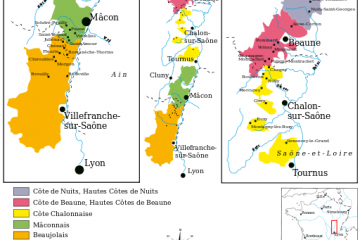Drink enough wine, and you’re quite likely to come across a faulty one now and again. The good news is that advances in winemaking technique, packaging and storage of wine mean that the incidence of wine faults today is lower than ever. The not so good news is that wine faults still can, and do, occur. It’s not a matter of life and death, but when nobody wants to drink a faulty wine. Our handy guide for identifying three of the most common wine faults will help you sniff out (literally) when your wine has gone bad.
Wine faults
Wine faults are part and parcel of drinking wine. For the most part, a faulty wine will do no more harm than ruining the enjoyment of a particular bottle. There’s not much you, the wine lover, can do to prevent faults. For the most part, this stuff happens on the microbiological level. Without a PhD in microbiology or oenology, you’re not going to want to know the molecular-level detail of how and why these things happen, either. The best you can do is learn to identify them (in layman’s terms), and act accordingly. Being able to spot these faults will help you when tasting wine in a restaurant, or preparing wine to serve to friends and family.
Cork taint (TCA)
This is the most commonly known wine fault. We’ve all at least heard of a “corked” wine. But how do you know if your wine is corked? Smell – or taste – one and you’ll know all about it. This problem is the result of a fungal reaction, most commonly between the cork and the wine. It has also been known to happen between wine and oak barrel, destroying entire batches of wine. Cork taint in wine is associated with a number of signature aromas, none of which are particularly appealing:
- Wet cardboard
- Musty and mould
- Old mushroom
- Damp basements and cellars
- Dirt and earth
Need we go on? If you’re smelling anything like the above in your wine, there’s a good chance it’s corked! If in doubt, check with a friend or ask for the sommelier’s opinion. Your best course of action here is to either send the wine back or pour it down the sink!
Oxidation
Oxidation occurs when wine comes into contact with air and begins to spoil. A little air contact is good for a wine, which is why oak barrel ageing is so popular, and why we decant wine. Some wines benefit from oxidative ageing, particularly Sherry. For the most part, though, oxidation is not desirable: Too much exposure to air, and the wine is no good. The best way to spot this wine fault is visually. Generally speaking:
- White wines tend to become darker when oxidised. Clear whites can turn to dark gold, amber or brown.
- Red wines tend to lose colour and become brick-red, brown or orange.
Aromas associated with oxidation can be a little like cider or cider vinegar for white wines, while reds may lose their aromas and become dull. In either case, send it back!
Reduction
So too much oxygen is no good, what about the corollary? Not enough oxygen, and your wine suffers from reduction. A reduced wine will tend to give off an unpleasant aroma of burnt sulfur or rotten egg. Sounds awful, right? It’s not pleasant, but reduction is actually fixable in some cases. If you’re determined to drink your reduced wine, try decanting the wine or dropping a piece of copper in there (seriously!).
What other wine faults have you encountered? Do you have any tips or tricks to overcome faults in wine?
[cta_generico id=2584]


